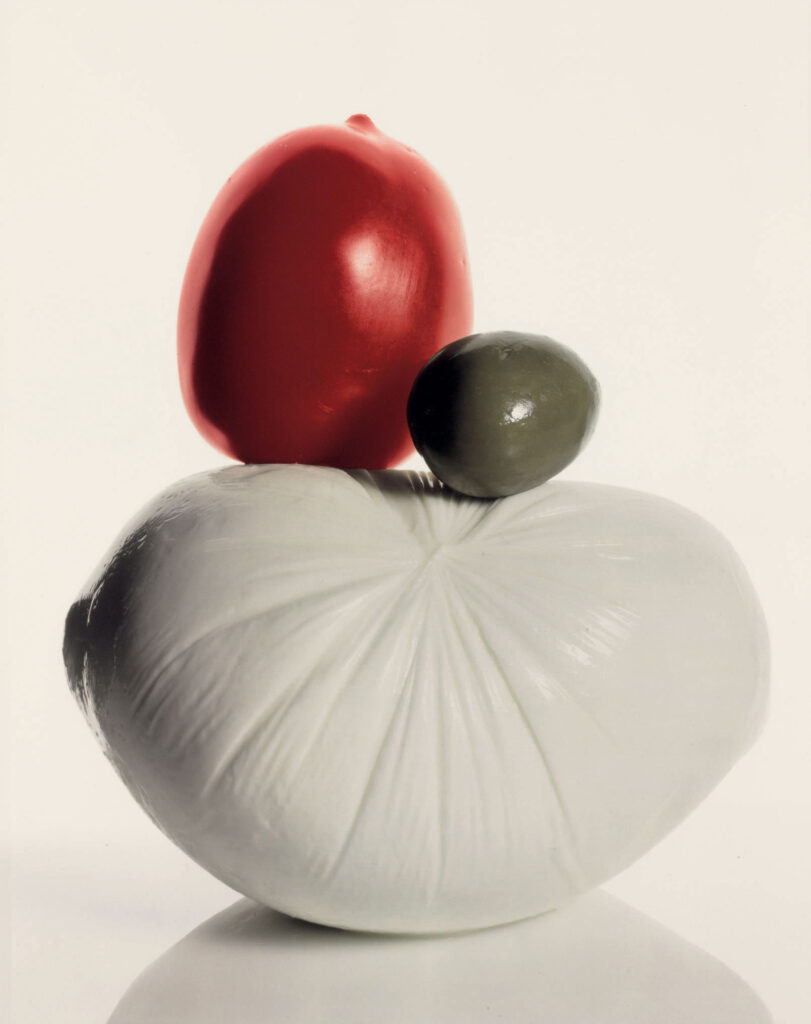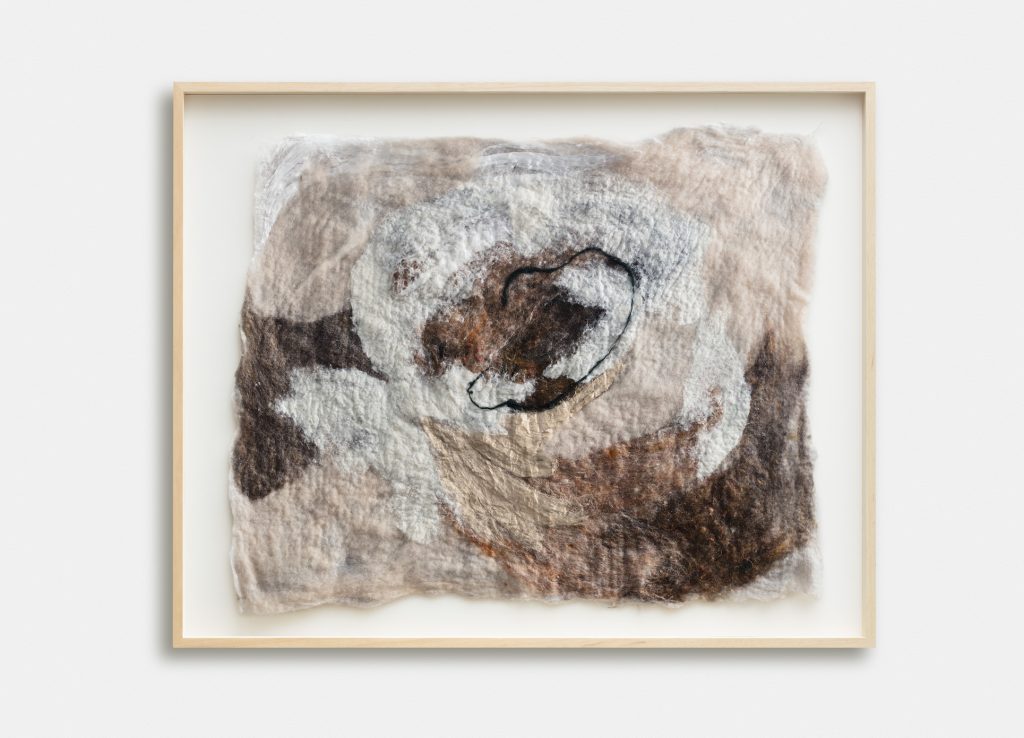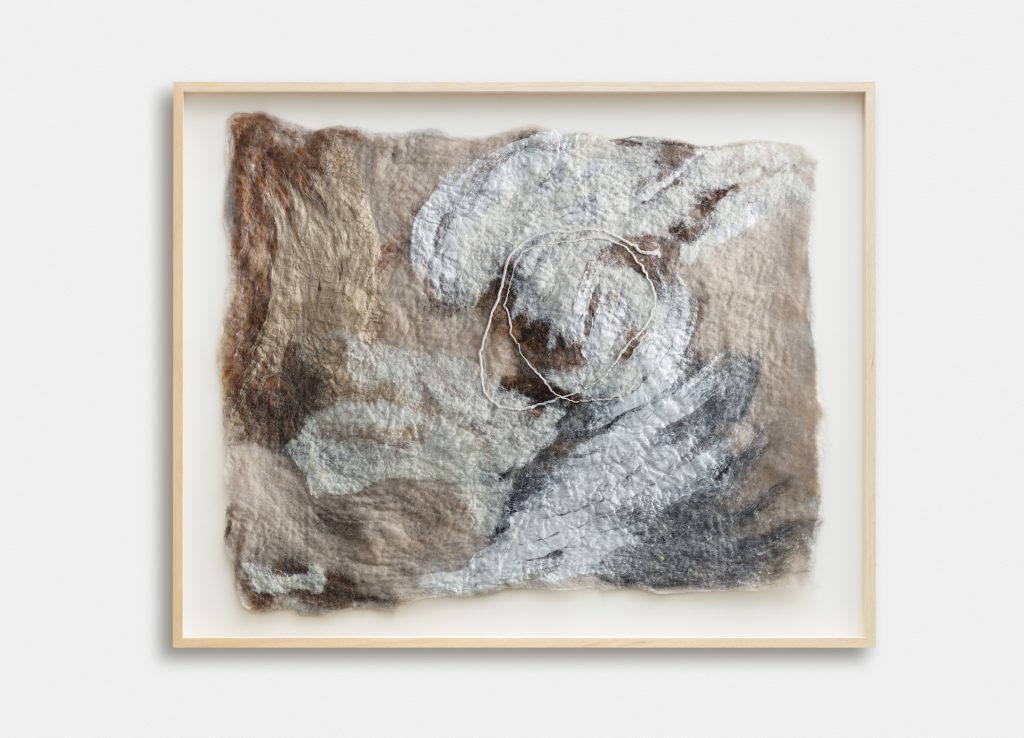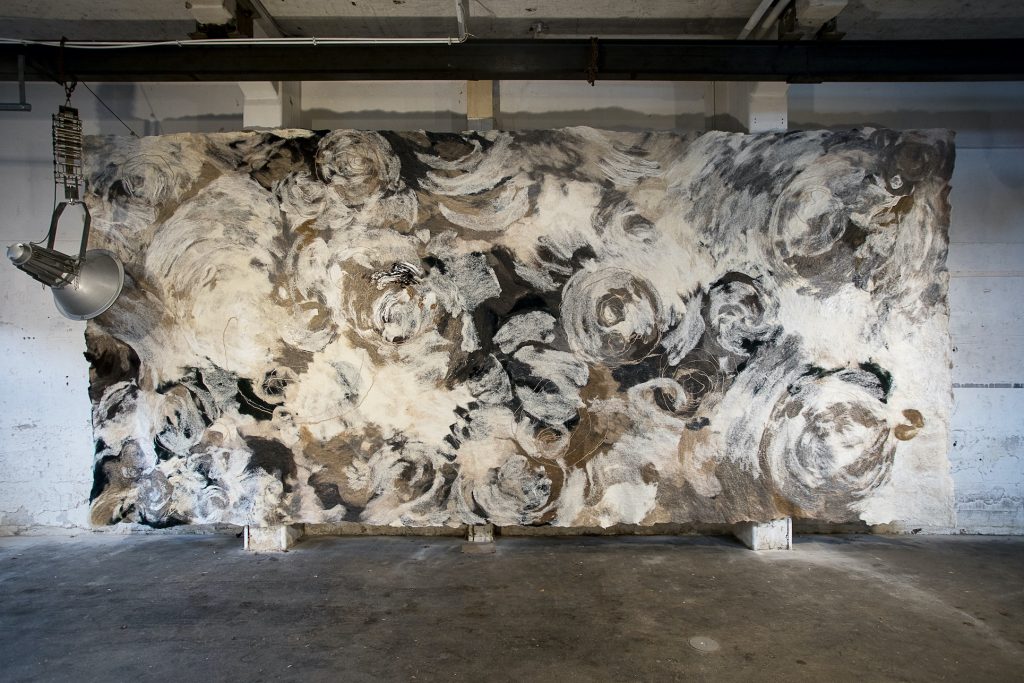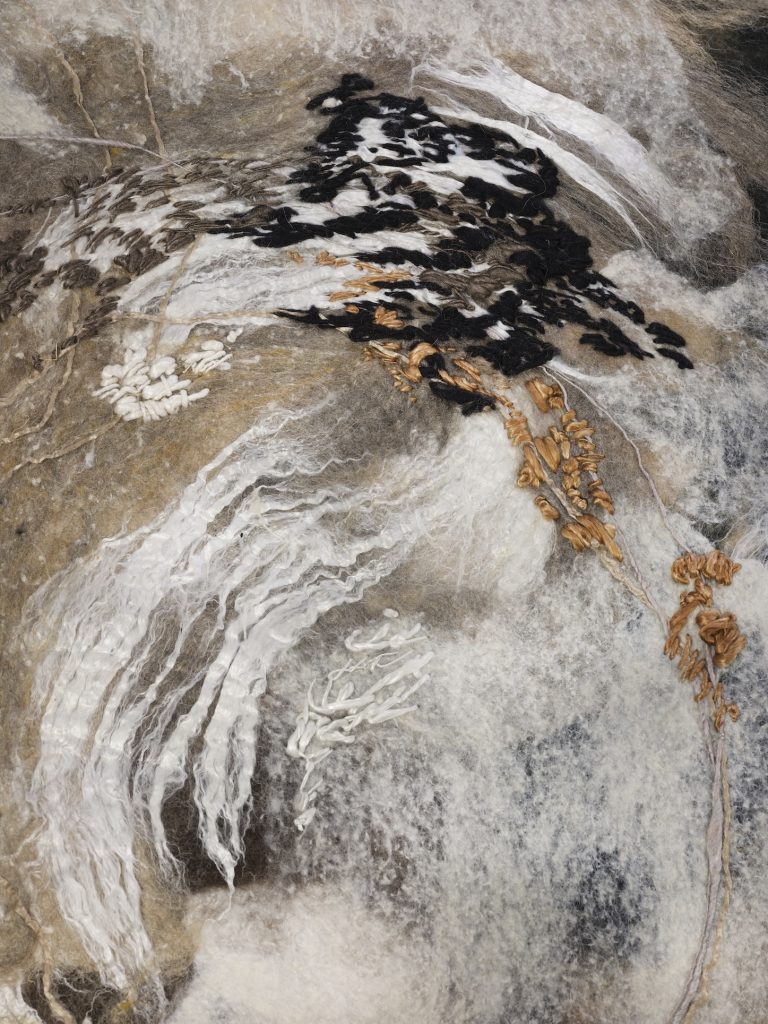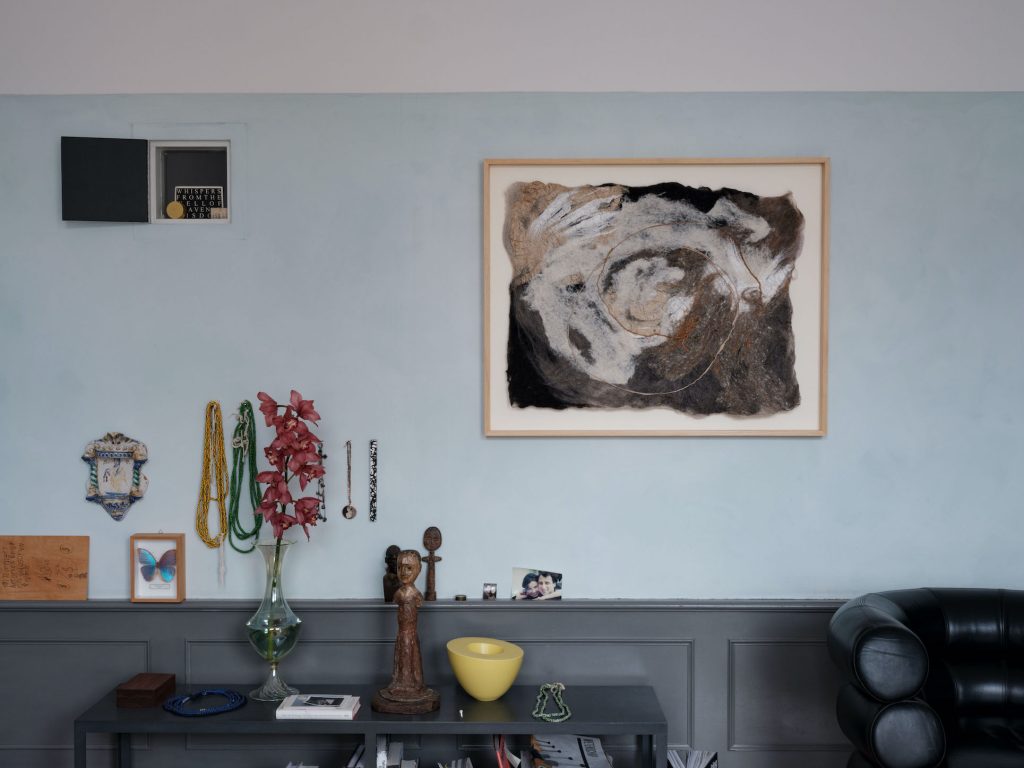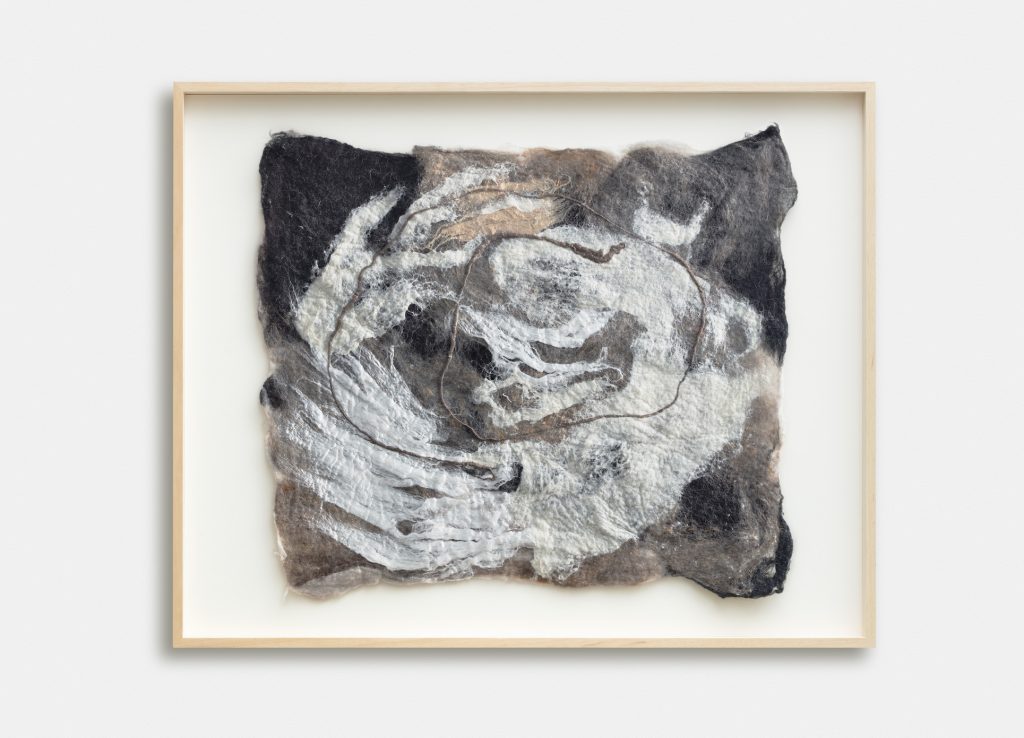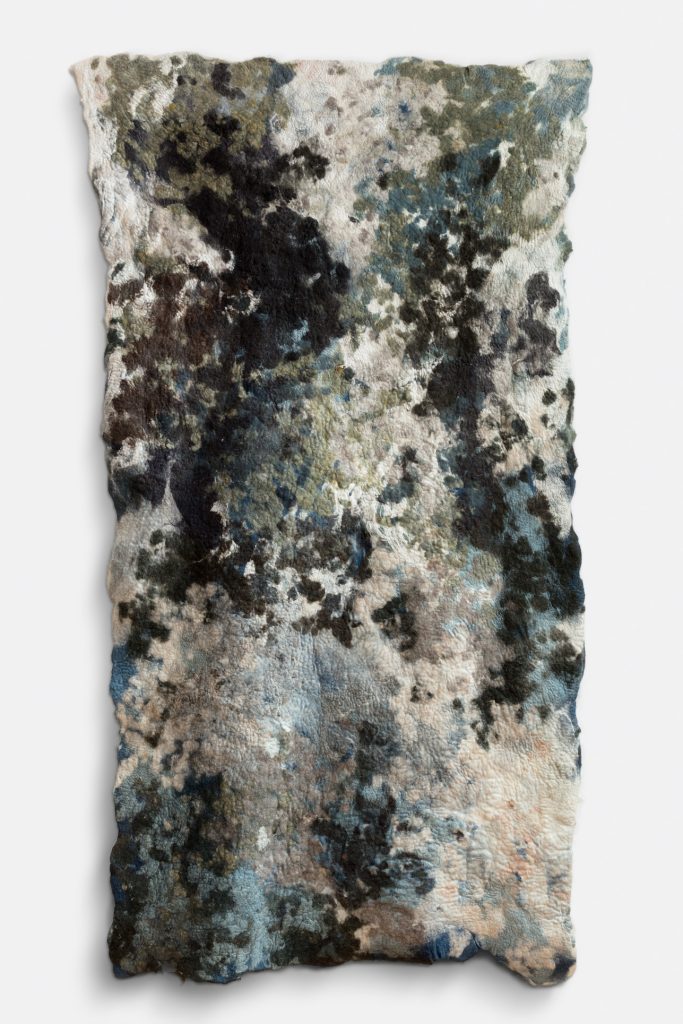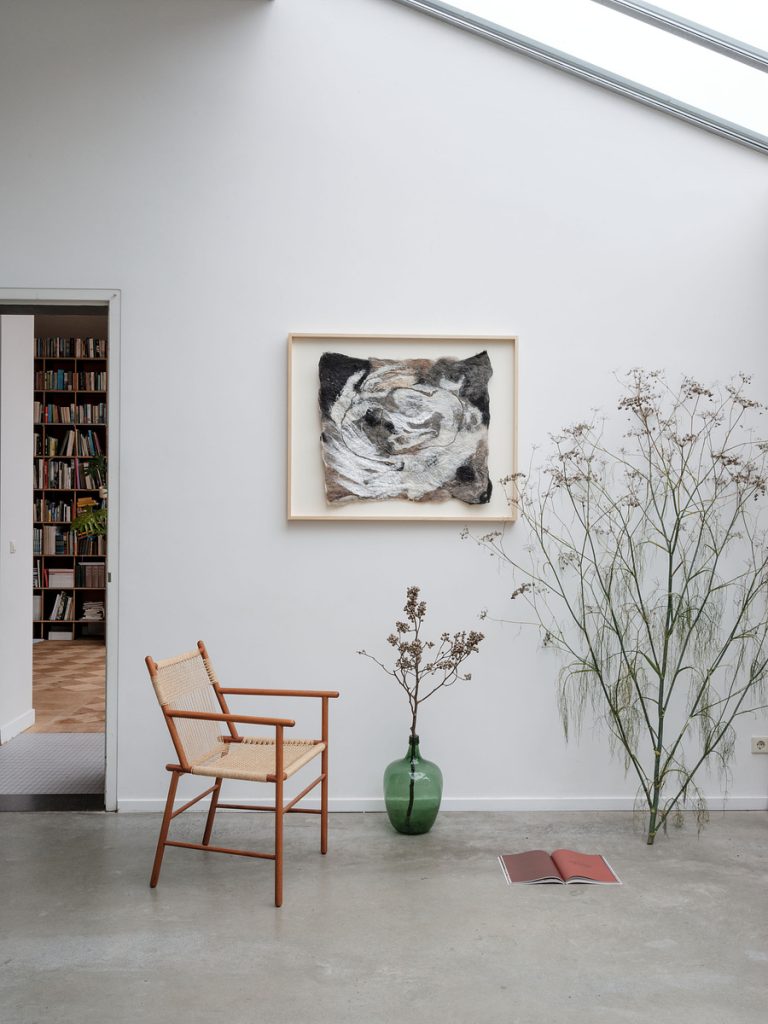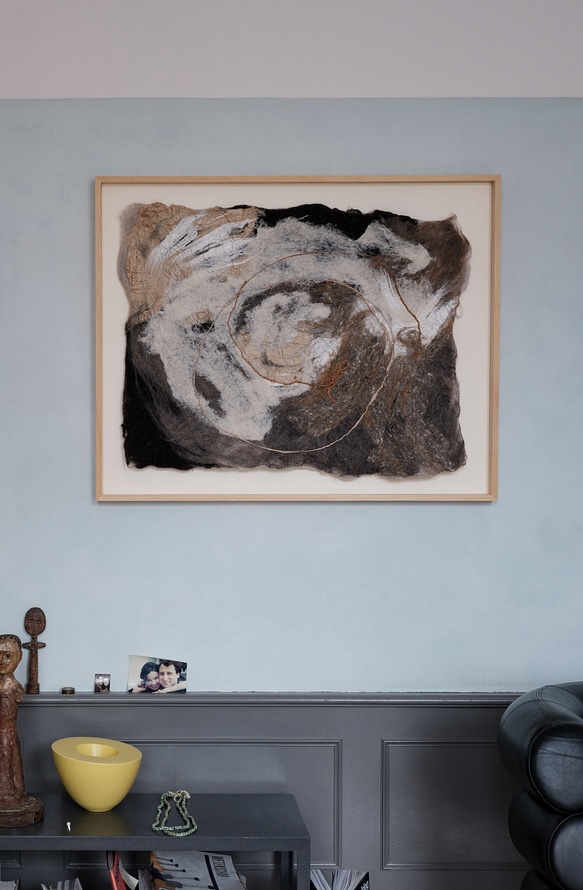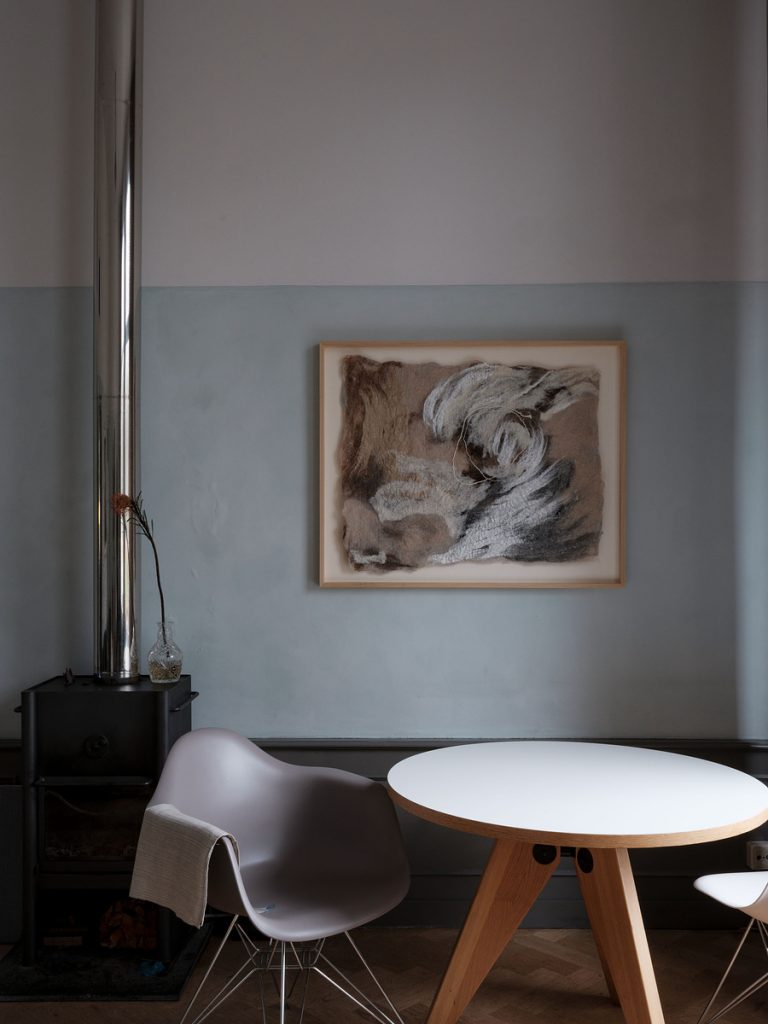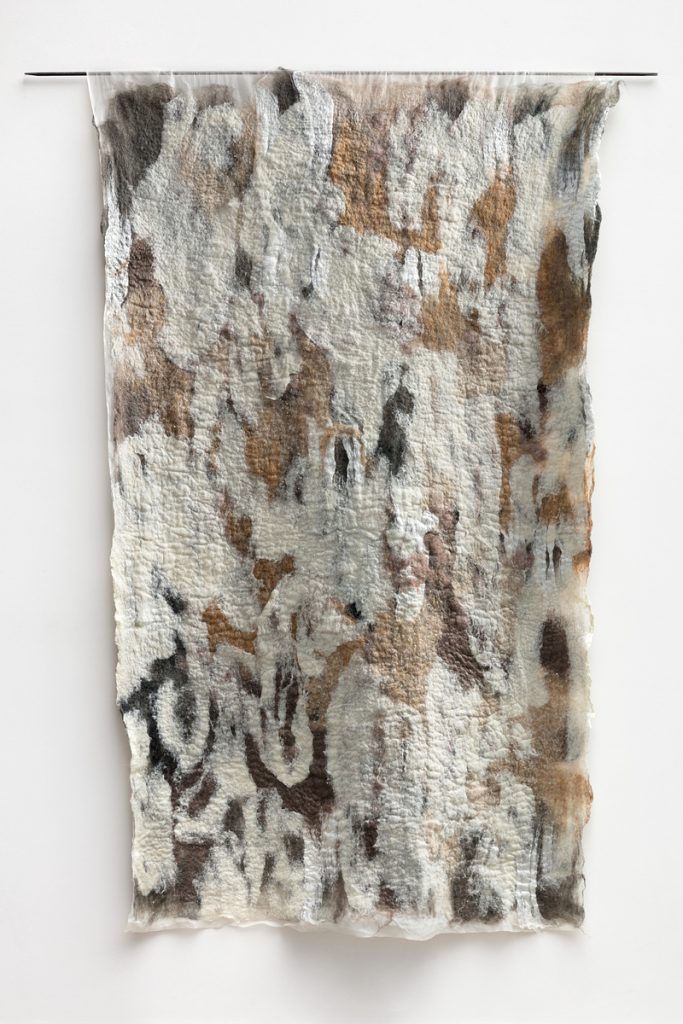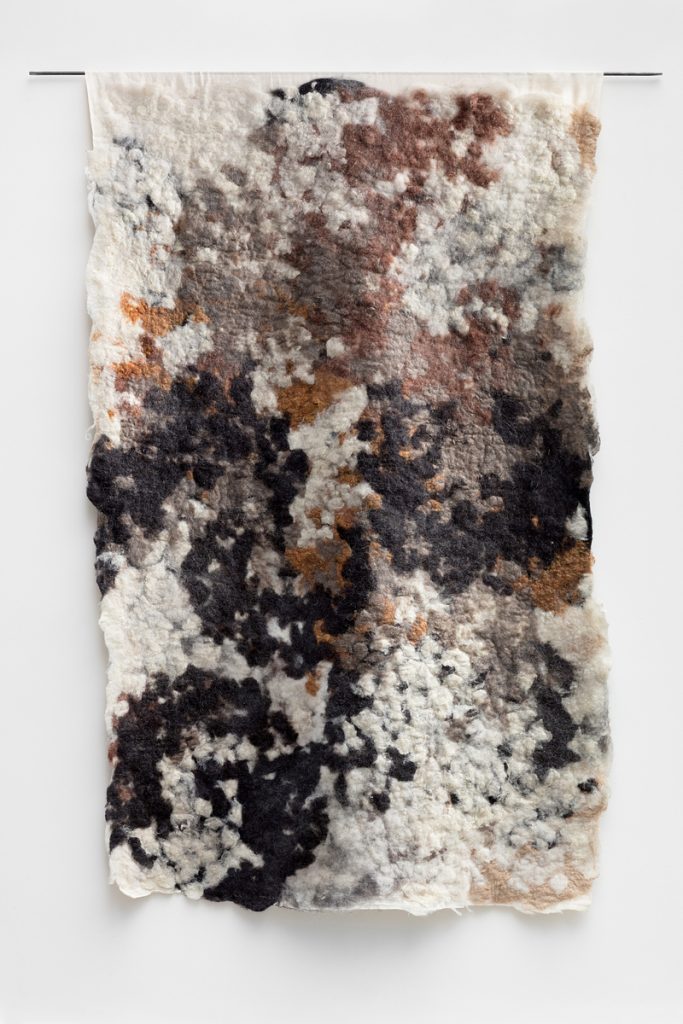Colour Fields
Claudy Jongsta
The windows have been washed, the parquet floors polished and the walls hung with art: See All This welcomes you into its venue for the Colour Fields exhibition featuring unique works by Claudy Jongstra as well as numerous other artists. Amongst the artworks shown at the exhibition are Jongstra’s monumental Guernica de la Ecologia, her Guernica Studies and Gold Series. Alongside this special edition Art Room, we are launching our vibrant winter issue, a number dedicated to the enchanting effects of colour, to endless colour and flower fields, to our warm feelings towards red, yellow or blue: ‘Suppose I were to begin by saying that I had fallen in love with a colour.’
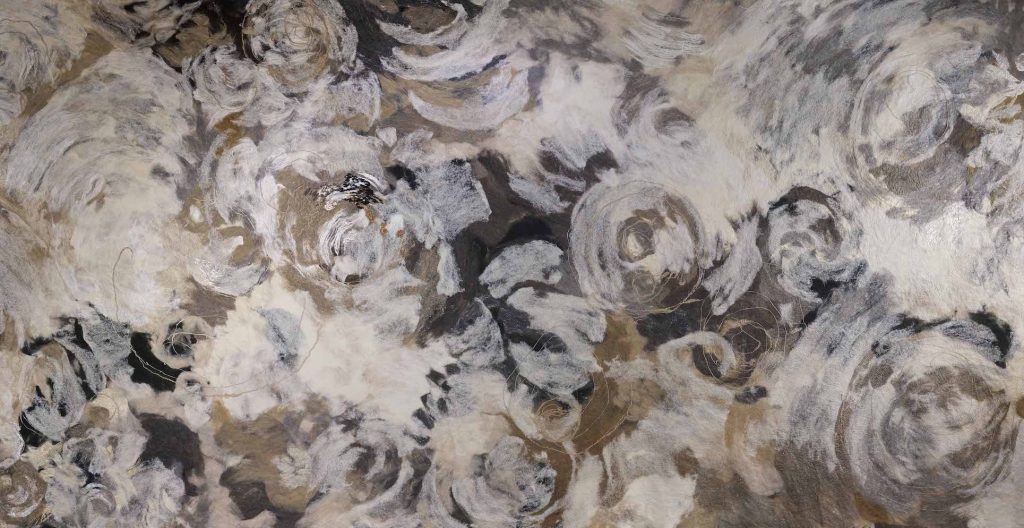
Fig 1.
Claudy Jongstra, Guernica de la Ecologia, 2021, 360 x 790 cm. Courtesy Galerie Fontana, Amsterdam.
‘Fabrics – man-made and natural – have changed, defined, advanced, and shaped the world we live in’
A day with Claudy Jongstra In the garden and studio
Guernica de la Ecologia (2021)
‘A new movement is emerging: Artivism. And Claudy Jongstra is one of its pioneers. Her latest work shows in its size and prestige that she is serious: Guernica de la Ecologia. A warning bell and a cry, but executed in soft, cuddly, hopeful and comforting wool.’
Claudy Jongstra, Guernica study no. 2, 2021, wool, silk, walnut, onion skin, woad, madder, 80 x 100 cm (frame)
Claudy Jongstra, Guernica study no. 2, 2021, wool, silk, walnut, onion skin, woad, madder, 80 x 100 cm (frame)
Claudy Jongstra, Guernica study no. 4, 2021, wool, silk, walnut, onion skin, woad, madder, 80 x 100 cm (frame)
Claudy Jongstra, Oakbar I, 2021; Drents heather and merino wool, mohair, silk and cotton, 188 x 107 cm
Claudy Jongstra, Pointillism Landscape Dark, 2021; Drents heather and merino wool, silk, silk organza and mohair, 185 x 116 cm
